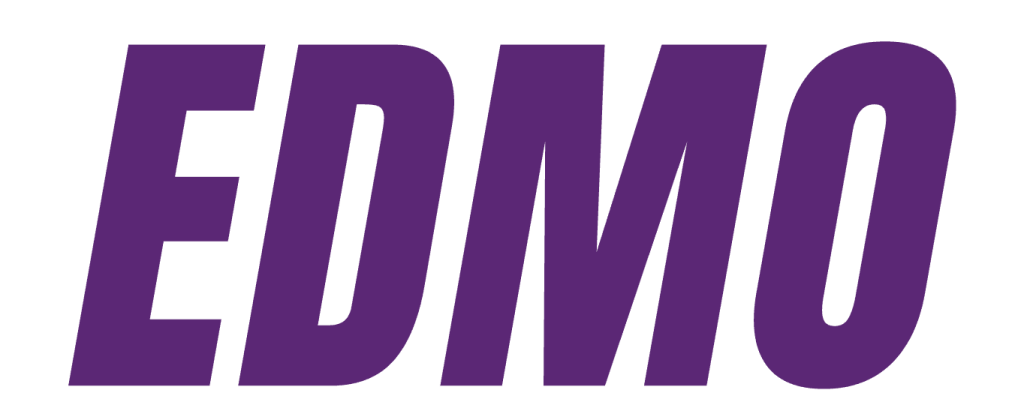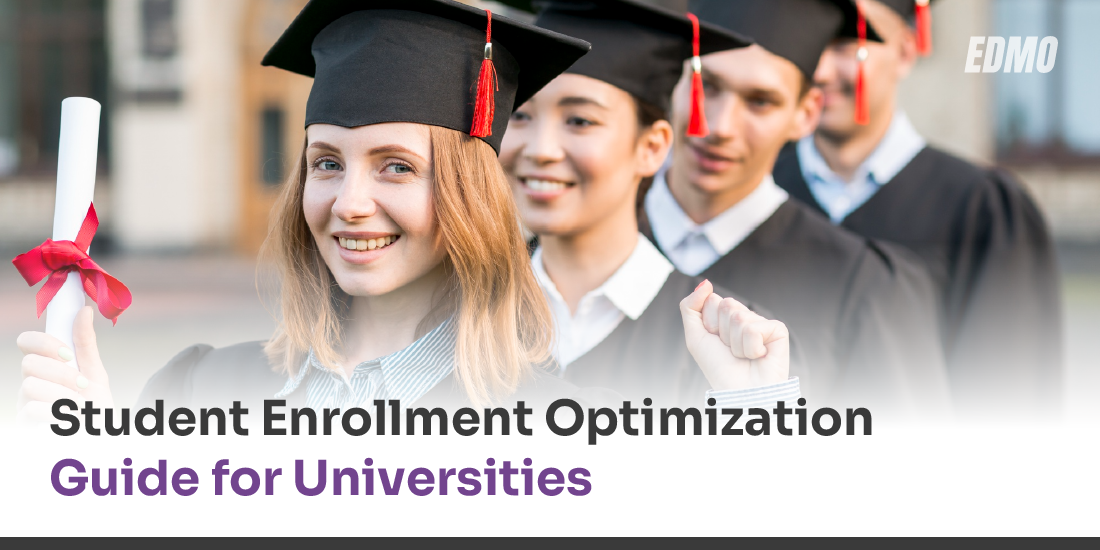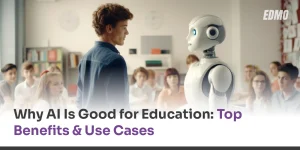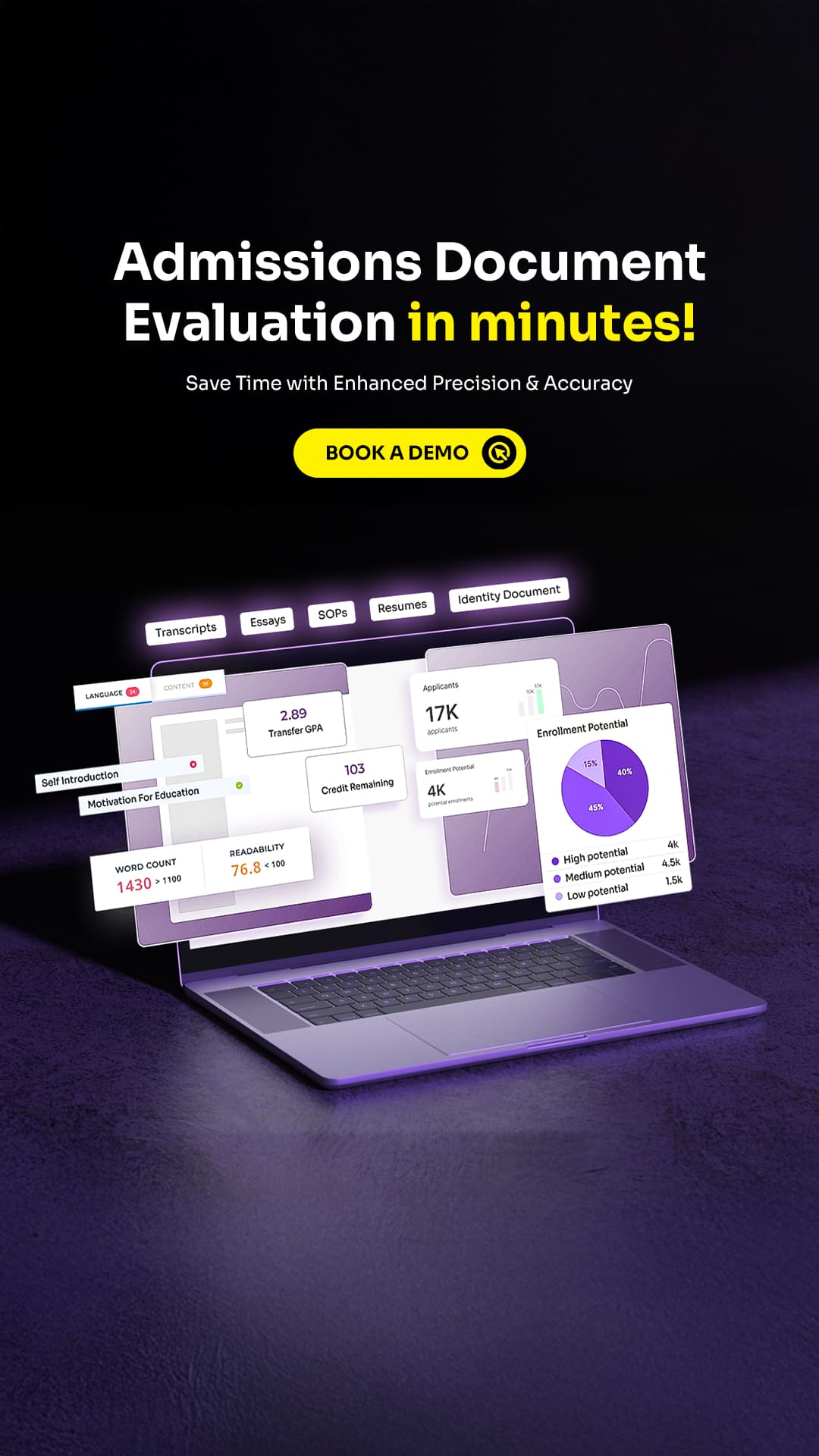Table Of Contents
Introduction
Universities today are facing major enrollment challenges. Recent reports show that first-year college enrollment in the U.S. dropped by over 6% in Fall 2024, raising concerns about an upcoming “enrollment cliff.” With rising competition and changing student expectations, institutions need smarter, data-driven strategies to attract and retain learners.
This Student Enrollment Optimisation guide highlights practical steps universities can take to strengthen recruitment, improve student experiences, and build stable, long-term enrollment growth.
Key Factors Influencing Student Enrollment
Student enrollment is shaped by multiple social, economic, and institutional elements. Understanding these factors is essential for effective Student Enrollment Optimization, helping universities attract, engage, and retain the right students. Below are the major drivers that influence enrollment decisions
Economic Conditions
The state of local and national economies can significantly impact enrollment patterns. During economic downturns, more individuals may pursue higher education to improve career prospects, whereas during prosperous periods, some may choose to enter the workforce immediately.
Cost of Education
The overall cost of attending college remains one of the biggest factors influencing a student’s enrollment decision. Rising tuition fees, along with added expenses such as housing, books, transportation, childcare, and healthcare, can make higher education less accessible. Recent reports show that some public universities have increased tuition by nearly 30% over the past decade, while several elite institutions are planning 4%+ tuition hikes for 2025–2026.
Financial Aid Availability
Financial aid plays a critical role in helping students choose whether and where to enroll. Scholarships, grants, and loans significantly reduce financial pressure, and the ease of accessing these resources can directly influence decision-making. According to the Ellucian Student Voice Report 2025, financial concerns remain the number one barrier to both enrollment and completion. Over 56% of students who never enrolled cite cost as the primary reason, and 53% of high schoolers not planning to attend college say affordability is their top worry.
Demographic Trends
Changes in population size, age distribution, and student diversity continue to reshape enrollment patterns across higher education. While declining birth rates and an ageing population may reduce demand for traditional undergraduate programs, interest in continuing and lifelong education is steadily rising. According to the State Higher Education Executive Officers Association, more than 500 private nonprofit four-year colleges have closed in the past decade—a closure rate three times higher than the previous decade—with 2024 seeing nearly one institution shut down each week.
Employment Prospects
Career outcomes play a major role in a student’s decision to enroll. Programs that lead to high-demand, well-paid careers naturally attract more applicants, as students increasingly evaluate the return on investment of their degrees. When institutions can demonstrate strong job placement rates and competitive earning outcomes, they strengthen their appeal and influence enrollment choices.
Geographic Location
A university’s location greatly affects its ability to attract students. Factors such as accessibility, safety, cost of living, climate, and surrounding amenities all shape a student’s perception of campus life. Many learners prioritize regions that offer affordability, convenience, and a supportive environment, making location a key part of their enrollment decision.
Institutional Reputation and Rankings
An institution’s reputation and ranking play a key role in attracting prospective students. Colleges and universities with strong academic standing or high national and global rankings often receive more applications, as students perceive them to offer better career opportunities, quality education, and long-term value.
Academic Programs and Offerings
The range and flexibility of academic programs are major factors in student enrollment decisions. Programs that offer desired courses, multiple degree options, minors, or internship-based credit are particularly attractive. Strong, specialized programs not only appeal to a wider pool of applicants but also help institutions differentiate themselves. According to reports from the Community College Research Center and Forbes, 90% of public high schools now offer dual enrollment programs, giving students early exposure to college-level coursework.
Access to Technology
Modern students expect robust digital infrastructure as part of their educational experience. Reliable campus WiFi, online portals, virtual courses, and digital learning resources play a crucial role in both attracting and retaining students. Schools like Zucker School of Medicine (NYU) use AI to pre-screen applicants, narrowing large pools for focused review. Tools like EDMO’s Document Intelligence can further streamline this process by quickly analyzing transcripts, SOPs, and LORs, helping institutions make faster, data-driven enrollment decisions
Cultural and Social Influences
Students’ educational decisions are often shaped by family expectations, peer recommendations, and broader societal norms. Many learners follow the academic paths of relatives or friends, or choose institutions that align with their cultural values and social priorities. Recognizing these influences helps universities tailor programs and support systems to meet diverse student needs.
Marketing and Outreach Efforts
Strategic marketing and outreach are critical for attracting prospective students. Universities with strong recruitment campaigns, active digital presence, and engaging events are more likely to capture interest and increase applications.
Government Policies
Enrollment is also influenced by government regulations at local, state, and federal levels. Policies related to immigration, student loans, affirmative action, and work-study programs can affect a student’s ability to access higher education and their choice of institution. Policy changes, such as the U.S. Supreme Court ending race-based affirmative action, have also had a measurable impact, with many elite colleges experiencing declines in Black student enrollment.

Source: AP News
Admissions Policies and Processes
The structure and clarity of admissions processes significantly affect student enrollment. Simple, transparent applications and responsive communication encourage prospective students to apply, while complex or slow procedures can discourage them.
Health and Safety Considerations
Campus health and safety are increasingly critical factors for students and their families. Health crises, natural disasters, or local incidents of violence can influence enrollment decisions. Concerns about mental health are particularly pressing: about half of college students report their mental health as “fair” to “poor”, 40% have considered transferring, and 30% have considered dropping out due to negative campus experiences.
Cultural and Social Trends
Modern students often select institutions that reflect their personal values and social priorities. Colleges that actively promote sustainability, equity, and community engagement tend to attract socially conscious learners, potentially boosting enrollment. Aligning institutional culture and messaging with these broader societal trends can strengthen both recruitment and student satisfaction.
Strategies for Increasing Student Enrollment
Effective student enrollment requires more than traditional recruitment tactics—it demands a strategic, data-driven approach. Student Enrollment Optimization focuses on attracting, engaging, and retaining the right mix of students while maximizing institutional efficiency and long-term success. By adopting modern enrollment practices, universities can improve application conversion, boost yield rates, and ensure a sustainable, diverse student body.
Predictive Analytics & Forecast-Driven Enrollment Planning
Modern universities increasingly rely on predictive analytics rather than assumptions to guide enrollment decisions. By leveraging tools like SAS and Ellucian, institutions can analyze large datasets to forecast application volumes, yield rates, and student success, while also identifying at-risk populations. According to a survey by MoldStud, 80% of colleges now use predictive analytics in their enrollment management strategies. With EDMO Conversation Intelligence, universities can also analyze applicant interactions across emails, chat, and forms, gaining insights into student intent and engagement to further refine recruitment strategies.
Why This Practice Is Essential
Predictive analytics enhances planning accuracy, reduces unnecessary marketing spend, and enables early interventions for students who may be at risk of not enrolling or persisting.
How to Implement
- Prioritize Data Hygiene: Standardize data collection across admissions, financial aid, and registrar teams.
- Invest in People & Platforms: Train teams to use analytics dashboards, Tableau, or Ellucian analytics tools.
- Start Small: Begin with core indicators (yield rates, conversion rates, geography, program demand).
- Continuously Validate: Compare predictions with actual results and refine the model.
- Break Silos: Create shared dashboards for admissions, marketing, and student success teams.
Centralized CRM Platforms for Seamless Recruitment
A centralized CRM replaces scattered spreadsheets and disconnected communication channels. Platforms like Salesforce Education Cloud, Element451, and Slate manage the entire student lifecycle—from inquiry to enrollment.
Why This Is Crucial
A CRM delivers personalization at scale, ensuring prospects receive timely, relevant communication. It improves conversion rates, eliminates missed follow-ups, and provides a 360° engagement view.
How to Implement
- Map Existing Workflows: Identify gaps before choosing the CRM.
- Train All Users: Ensure teams understand automation, segmentation, and data entry standards.
- Create Data Governance Rules: Standardize naming, fields, permissions, and audits.
- Automate Smartly: Start with simple, high-impact workflows (reminders, behavioral triggers).
- Use Templates: Maintain brand consistency with on-brand email, SMS, and portal templates.
Institution-Wide Strategic Enrollment Planning (SEP)
Strategic Enrollment Planning (SEP) integrates academic, financial, and enrollment objectives across the entire institution. Instead of focusing solely on short-term recruitment targets, SEP creates a coordinated, long-term approach to enrollment growth and stability. For instance, Elon University’s implementation of SEP contributed to an impressive 90% freshman retention rate, demonstrating its impact on student success and institutional health.
Why This Is Crucial
Strategic Enrollment Planning (SEP) helps colleges use their resources, financial aid, and academic capacity more effectively. This leads to steady growth, attracts the right students, and strengthens long-term financial stability.
How to Implement
- Form a Leadership Committee: Create a cross-departmental SEP council.
- Conduct Market Research: Evaluate demographics, competitors, and workforce trends.
- Build Shared KPIs: Define metrics tied to enrollment, diversity, and financial goals.
- Plan Scenarios: Prepare best-case and worst-case enrollment forecasts.
- Create an Actionable 3–5 Year Plan: Assign owners, timelines, and measurable goals.
Yield Management & Tuition Revenue Optimization
Yield management focuses on using data to design financial aid and scholarship strategies that maximize both student enrollment and net tuition revenue. By analyzing student price sensitivity, financial need, and competitor aid packages, institutions can target aid effectively. According to the National Association of College and University Business Officers, the average tuition discount rate for first-time, full-time undergraduates at private colleges was 56.3% in 2024–25, while it was 51.4% for all undergraduates.

Source: InsideHigherEd
Why This Is Crucial
More institutions face budget pressures making it critical to enroll the right mix of students without excessive discounting. Smart yield management boosts both diversity and financial sustainability.
How to Implement
- Align Financial Aid With Mission: Balance equity with revenue.
- Run A/B Aid Experiments: Test award amounts, communication styles, and scholarship names.
- Track Competitor Strategies: Monitor competitors’ pricing and financial aid trends.
- Make Small Adjustments: Avoid disruptive, large-scale discount changes.
- Be Transparent With Families: Ensure award letters clearly explain value and costs.
Multi-Channel Digital Marketing & Recruitment
Students now interact with institutions across dozens of online touchpoints—Google search, social media, ads, video content, email, and more. A multi-channel strategy uses coordinated digital efforts to maintain visibility throughout the student journey.
Why This Is Crucial
This approach boosts reach and relevance. It ensures prospects consistently encounter tailored messages that move them from awareness to application to enrollment.
How to Implement
- Create Platform-Specific Content: Use TikTok for short videos, Instagram Stories for campus life, blogs for SEO, and LinkedIn for graduate programs.
- Use Tracking & Retargeting: Deploy Meta Pixel, Google Tag Manager, and retargeting ads.
- Prioritize Video: Promote virtual tours, testimonials, and ambassador-led content.
- Optimize for Search: Improve organic visibility through SEO-rich content.
- Master Paid Ads: Use Facebook Lead Gen Ads and Google PPC for high-quality inquiries.
Student Success & Retention Integration
Enrollment doesn’t end at matriculation. Integrated student success strategies ensure students stay, progress, and graduate. This requires joint efforts from advising, financial aid, student life, and academic departments.
Why This Is Crucial
Retaining a student costs far less than recruiting a new one. Strong retention improves graduation rates, institutional reputation, and long-term revenue.
How to Implement
- Adopt Early-Alert Systems: Track attendance, grades, portal activity, and engagement.
- Create Smooth Transitions: Share data from admissions to advising teams.
- Use Analytics for Interventions: Identify barriers and customize support.
- Train All Staff: Emphasize their role in student persistence.
- Build Cross-Functional Teams: Coordinate efforts across all student-facing departments.
Personalized Communication & Engagement
Generic emails and mailers are no longer effective in reaching prospective students. Personalized communication leverages data on student behavior, interests, and demographics to deliver messages tailored to each individual. According to Niche’s 2024 Enrollment Survey, 9 out of 10 students reported that relevant content from a college influenced their enrollment decision, yet only about 15% felt they actually received personalized communications.
Why This Is Crucial
Personalization improves open rates, conversions, and emotional connection. Students feel recognized and valued—leading to stronger engagement throughout the funnel.
- Segment Audiences: By major, geography, enrollment stage, and interest areas.
- Create Dynamic Content: Use variable fields and behavioral triggers.
- Develop a Content Library: Videos, testimonials, program factsheets, etc.
- Use Progressive Profiling: Collect data gradually, not all at once.
- Test & Optimize: Use A/B testing for email subjects, messaging, and CTAs.
- Honor Preferences: Let students choose communication frequency and channels.
Adopt Emerging Technologies
Today’s students expect digital-first, interactive experiences—from personalized content and virtual campus tours to intuitive course catalogs and smart scheduling tools. Implementing these technologies helps institutions enhance engagement, simplify the enrollment process, and provide clearer insights for prospective students. According to EAB’s 2024 First-Year Experience Survey, 35% of students took their first virtual tour either just before or during the application process, highlighting the growing role of digital tools in decision-making.
Why This Is Crucial
Students make decisions faster when they can visualize campus life, explore programs, and understand career outcomes instantly. Technology-driven personalization improves recruitment, yield, and long-term satisfaction.
- Personalize Your Website – Use analytics-driven CMS to tailor content; 87% of students say a well-designed website boosts their perception of a college.
- Use Virtual Tours & Interactive Maps – Embed virtual tours and GPS-enabled maps 60%+ of students use tours before enrolling, and 62% say tours boost their likelihood to apply.
- Upgrade Your Course Catalog – Swap static PDFs for interactive, mobile-friendly catalogs with videos, career data & degree planners.
- Enable Smart Scheduling – Use algorithms to create personalized, conflict-free class schedules that align with student life and keep them on track to graduate.
How College Enrollment Is Expected to Evolve in the Next Decade
While college enrollment patterns will differ by region, field of study, and type of institution, several emerging trends are expected to influence the landscape of higher education. Understanding these developments is essential for universities aiming to stay ahead in Student Enrollment Optimization and effectively plan for future growth and changing student needs.
Rising Importance of Alternative Credentials
Traditional four-year degree programs are facing growing competition from shorter, specialized options such as certificates, bootcamps, and microcredentials. These programs are often more flexible and affordable, appealing to the needs of today’s learners. According to a survey reported by eCampus News, 97% of institutions offering microcredentials believe they enhance students’ long-term employment prospects, and 73% have expanded their microcredential offerings since their introduction.
Expansion of Hybrid and Online Learning
The demand for online and hybrid programs is expected to keep rising, a trend boosted by the COVID-19 pandemic. These flexible learning options help students balance education with work, family, or other commitments. According to the CHLOE 10 Report 88% of colleges and universities plan to expand online offerings in the next three years, highlighting continued strong demand.
Focus on Work-Integrated Learning
Internships, co-op programs, and apprenticeships will become increasingly integral to degree programs. Work-integrated learning helps students develop career-ready skills and enhances employability, making programs that offer hands-on experience more attractive to prospective students.
Growth of Lifelong Learning
Learning will increasingly be viewed as a continuous process. Professionals will seek opportunities to upskill and reskill throughout their careers, driving institutions to expand continuing education programs and partnerships with employers. Lifelong learning is expected to become a central component of enrollment growth and financial sustainability.
Global Enrollment Dynamics
International student enrollment may fluctuate due to immigration policies and geopolitical factors, yet global demand for higher education is expected to remain strong. Institutions that adopt best practices for international recruitment can continue attracting students from abroad.
Integration of Artificial Intelligence and Personalized Learning
AI, learning analytics, and language models will enable more adaptive and personalized educational experiences. Programs that creatively incorporate AI-driven technologies are likely to appeal to future students seeking customized learning pathways.
Adoption of Competency-Based Education
Competency-based education (CBE) models, which emphasize mastering specific skills rather than accumulating credit hours, are predicted to gain momentum. CBE offers greater accessibility and flexible pathways to success, particularly for nontraditional and diverse learners.
Strengthening Educational Partnerships
Universities are increasingly collaborating with industry partners to create tailored programs, enhance internships, and improve job placement opportunities. These partnerships help align education with workforce needs, making programs more attractive to prospective students. According to a 2025 survey reported by e‑IM Partnerships, 74% of institutions report growth in public-private partnerships (P3s), particularly in workforce development and AI.
Emphasis on Diversity, Equity, and Inclusion
Enrollment patterns will continue to evolve as institutions prioritize access for historically underrepresented groups. By redesigning marketing, admissions, and registration processes to be more inclusive, colleges can reach a broader, more diverse student population.
Expansion Through Micro and Branch Campuses
Some universities are opening micro or branch campuses to expand their regional and global reach. These smaller campuses serve niche industries, local workforce needs, and diverse student populations. For example, the University of New Haven recently announced a branch campus in Riyadh, Saudi Arabia, targeting 13,000 students by 2033, highlighting the trend of U.S. institutions expanding internationally.
Blockchain Credentials and Verification
Blockchain technology could simplify the verification and sharing of educational credentials, making it easier for students to demonstrate their qualifications to employers. This innovation may further encourage enrollment in formal educational programs.
Conclusion
Student Enrollment Optimization is no longer optional; it’s essential for universities navigating changing demographics, rising competition, and shifting learner expectations. By using data-driven strategies, improving student experiences, and adapting to new technologies, institutions can build stronger, more sustainable enrollment pipelines. With the right approach, universities can not only meet their enrollment goals but also create long-term value for students and their communities.









No comments yet. Be the first to comment!
Leave a Comment